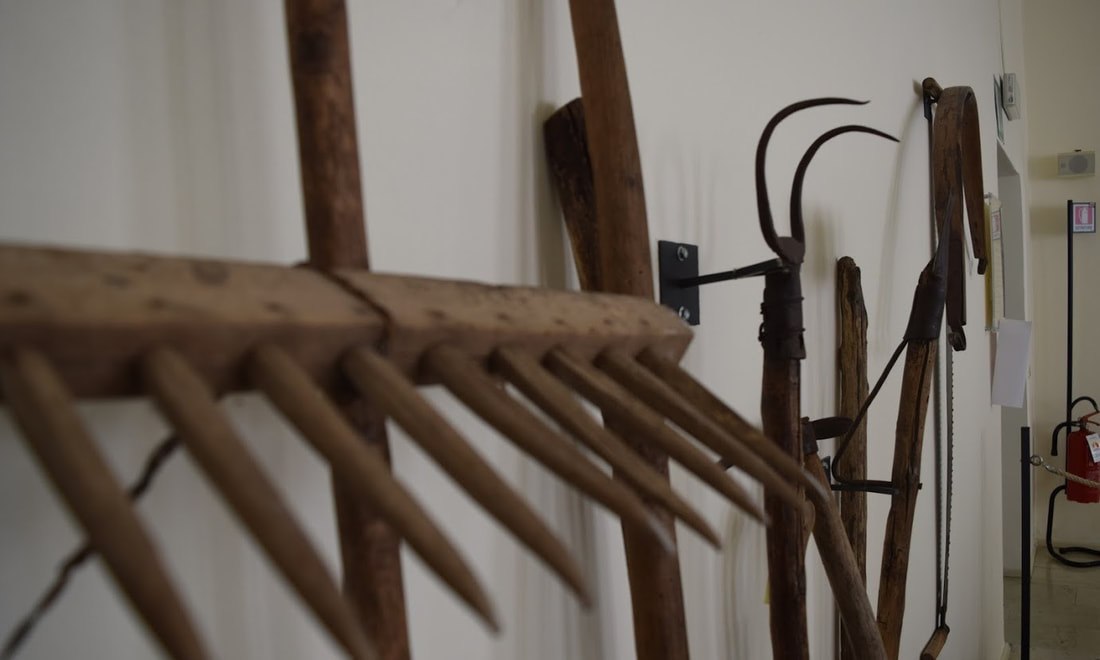
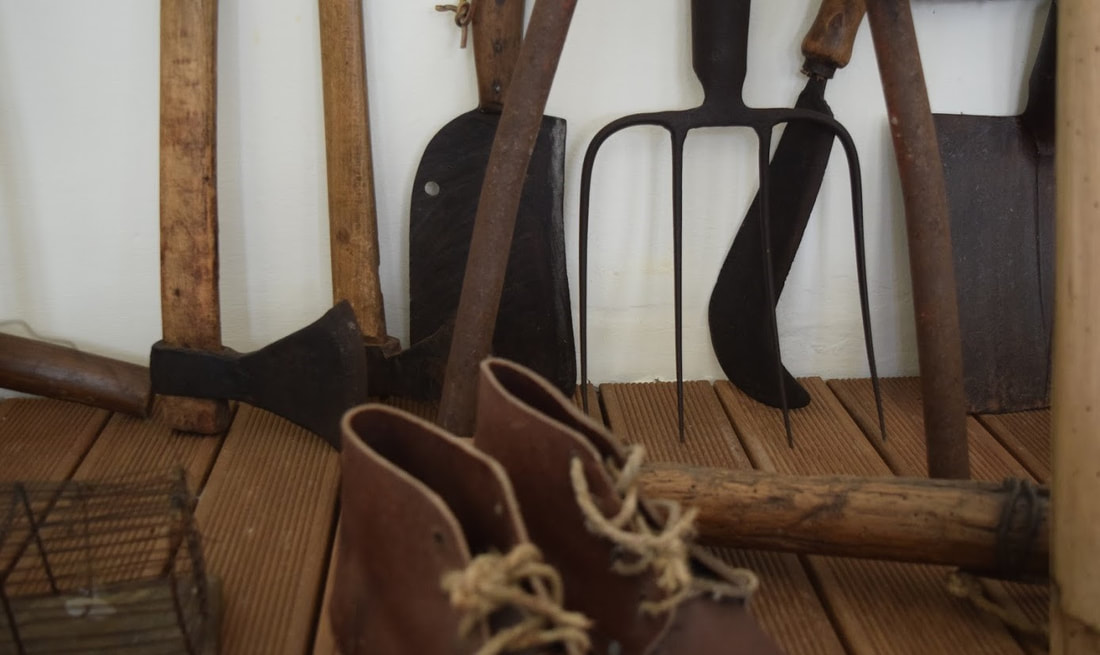
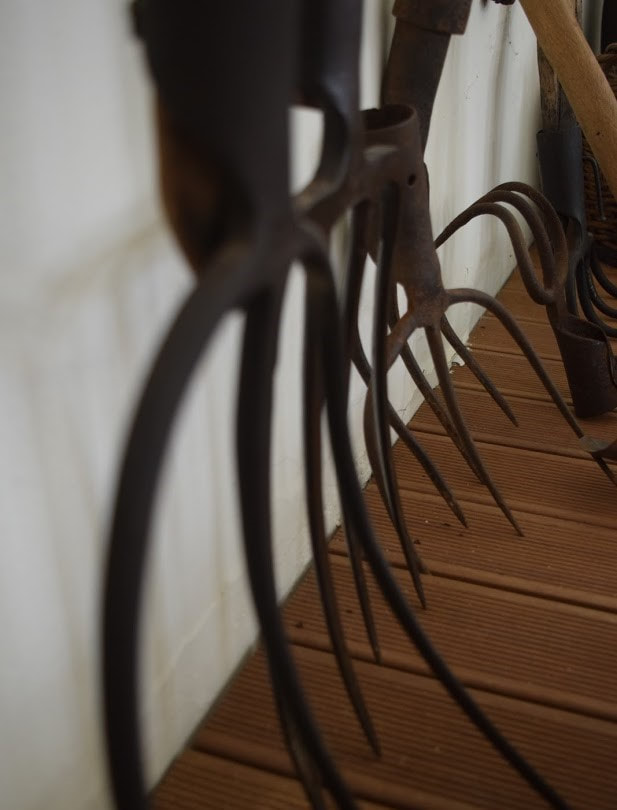
Although large agricultural estates existed, agriculture in the Garda region was characterized by small plots of land cultivated for self-sufficiency. The plowing and movement of agricultural carts were done exclusively with animals, often using cows that, besides providing milk and calves, were also used for pulling when needed. The wooden yoke was used to harness cows and oxen. Haymaking, which was crucial for feeding draft and meat animals, was done using a scythe, a wooden rake, and a pitchfork. The agricultural cycle began in November with the spreading of manure and the sowing of wheat in the fields. It continued in spring with the pruning of vines and olive trees: viticulture and olive cultivation were the main agricultural activities. Corn was sown in April. Early in the summer, wheat was harvested. In September, the grape harvest began, and in November, the olive harvest concluded the agricultural year.
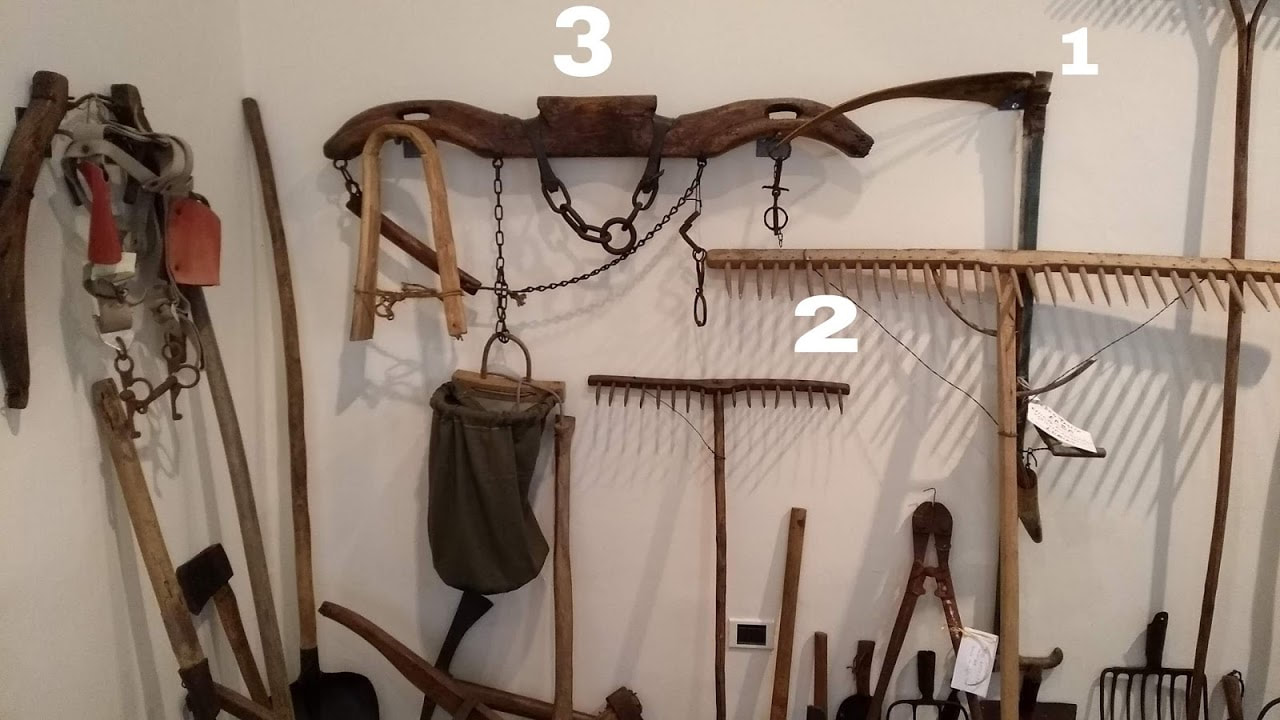
1) HAY KNIFE: An agricultural tool from the first half of the 20th century, consisting of a sharp metal plate with a wooden handle, used for cutting fodder.
2) RAKE: An agricultural tool from the first half of the 20th century used for collecting hay and straw, entirely made of wood.
3) YOKE: A wooden and metal device from the first half of the 20th century used in agriculture for animal traction, applied to the front part of two draft animals.
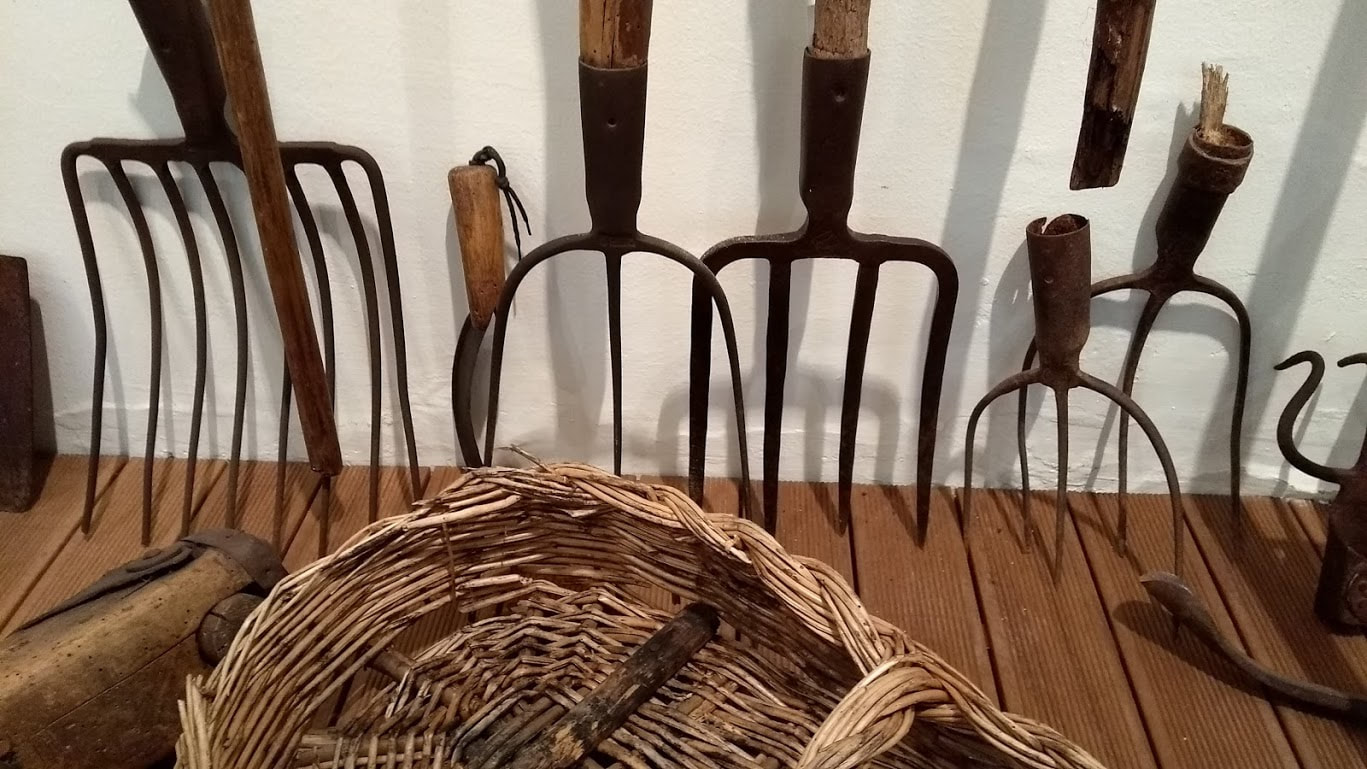 PITCHFORK: An agricultural tool from the first half of the 20th century similar to a rake, used for collecting hay and straw, consisting of a wooden handle and a metal end with two prongs called “tines”.
PITCHFORK: An agricultural tool from the first half of the 20th century similar to a rake, used for collecting hay and straw, consisting of a wooden handle and a metal end with two prongs called “tines”.
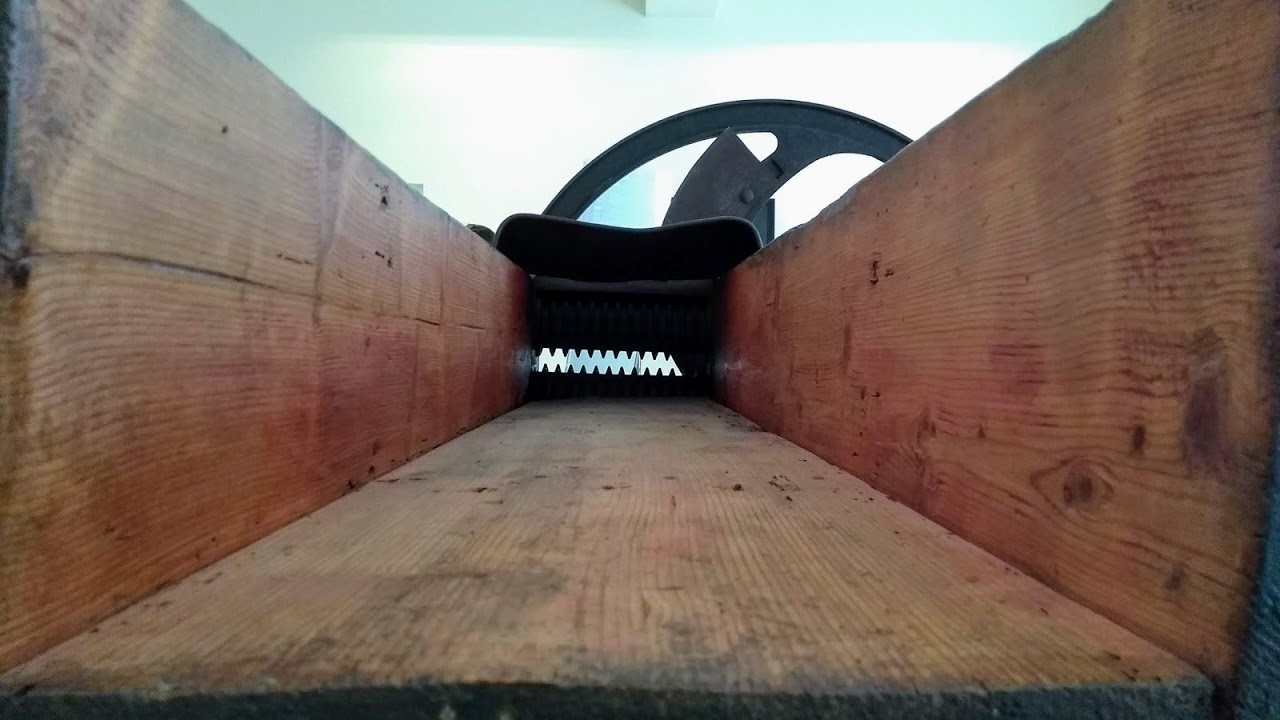
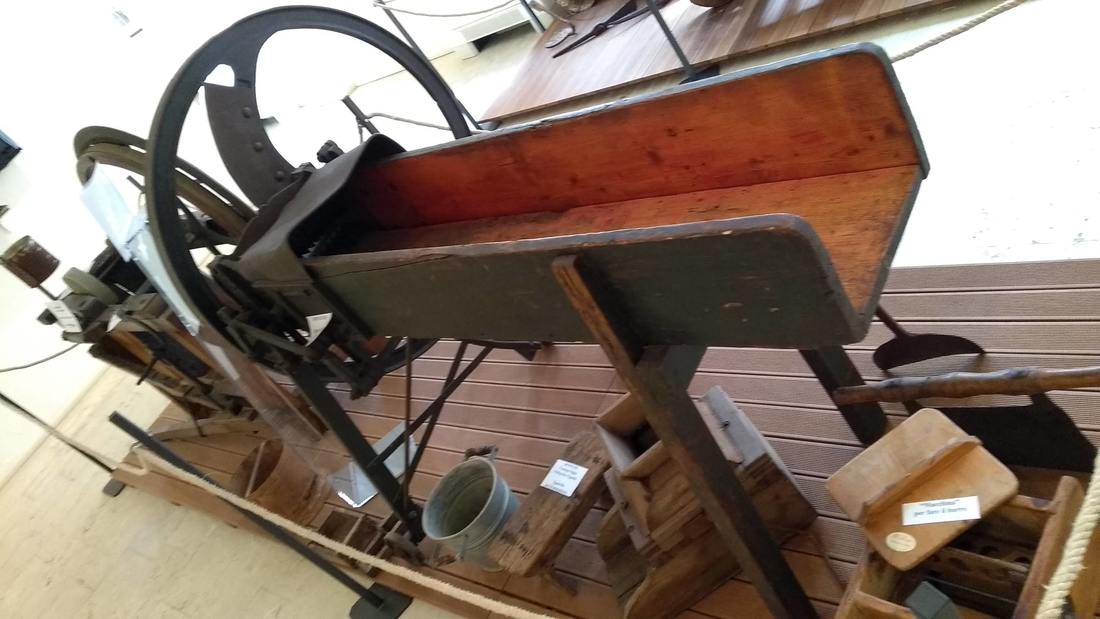
FORAGE CHOPPER: An agricultural tool from the first half of the 20th century used for crushing forage, hay, seeds, etc., operated manually.
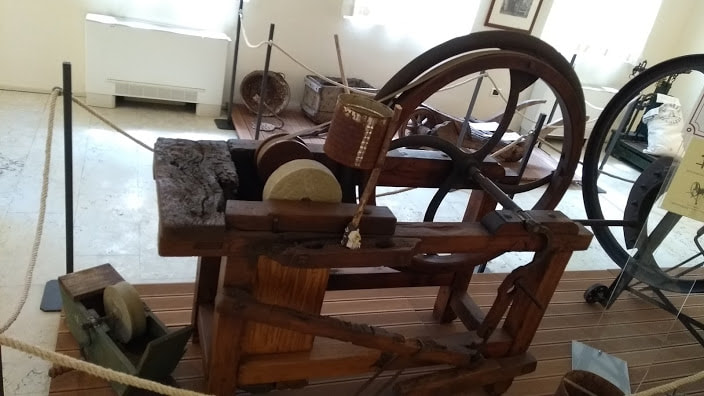 FOOT PEDAL GRINDER: A wooden piece of equipment from the first half of the 20th century consisting of a wooden frame and a pedal-operated wheel, connected by a sliding belt to a round abrasive stone.
FOOT PEDAL GRINDER: A wooden piece of equipment from the first half of the 20th century consisting of a wooden frame and a pedal-operated wheel, connected by a sliding belt to a round abrasive stone.